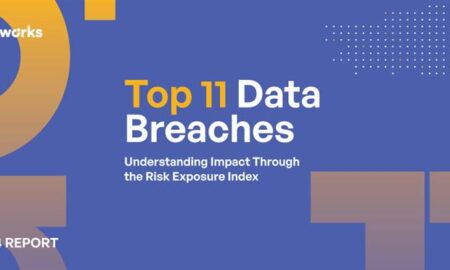In the fast-paced world of commerce, not all businesses are created equal, especially when it comes to processing payments. For many enterprises deemed as “risky” by financial institutions, securing a payment processing solution can be a daunting challenge. Enter the high risk merchant account—a specialized financial service designed to cater to the unique needs of businesses operating in industries such as supplements, travel, high volume, and subscription. But what exactly makes a merchant account “high risk,” and how can your business benefit from it? This comprehensive guide will delve into the intricacies of high risk credit card processing, helping you navigate through the complexities and unlock new opportunities for your business.
High risk merchant accounts function as more than financial services because they provide essential support to businesses dealing with elevated chargeback rates and strict industry regulations. High-risk businesses can use these accounts to process credit card payments while maintaining efficient transactions and growing their customer base. The process of obtaining these merchant accounts presents its own set of difficulties through elevated fees and strict underwriting requirements. The following guide provides essential information to help you tackle your payment processing obstacles and achieve business success.
Whether you’re a seasoned entrepreneur or just starting out in a high-risk industry, understanding the nuances of high risk payments is crucial. From exploring the benefits and drawbacks to offering tips on selecting the right provider, this guide will equip you with actionable insights and strategies. So, buckle up and get ready to transform your business’s payment processing capabilities, ensuring you’re well-prepared to thrive in today’s competitive market.
Understanding High Risk Merchant Accounts
Businesses need to understand the specific conditions that make them eligible for high-risk merchant accounts because they operate in industries with elevated risk factors. High-risk merchant accounts serve businesses which experience elevated fraud and chargeback probabilities that conventional payment processors tend to avoid. High-risk merchant accounts serve as essential financial tools for travel companies and high-volume merchants and ecommerce businesses and supplement sellers and subscription-based services because traditional processors tend to avoid these sectors. The designed accounts help businesses handle the complex challenges of high-risk industries by addressing both elevated chargeback rates and strict legal requirements.
The criteria for being classified as high-risk can vary significantly between banks and payment processors. Factors such as operating in industries with a high chargeback ratio, handling numerous high-value transactions, or being a new business without an established reputation can lead to a high-risk designation. For example, a Software as a Service (SaaS) company with a free trial model might experience chargebacks from customers who forget to cancel their subscriptions, thus increasing their risk profile. Additionally, high-risk merchant accounts typically involve higher processing fees—often 2.95% plus 25 cents per transaction compared to lower rates for standard accounts—and lengthier application processes requiring detailed business information and potentially personal credit checks.
Choosing the right high-risk merchant account provider involves careful consideration of several critical factors. It’s essential to work with a provider experienced in your specific industry, as they can better understand and manage the unique risks involved. Transparency in fee structures is also crucial; providers should clearly outline all costs, from setup fees to monthly maintenance charges, to avoid hidden expenses. Furthermore, effective chargeback management tools and flexible contract terms can offer significant advantages, helping businesses mitigate risks and maintain operational flexibility. As the financial landscape becomes increasingly risk-averse, having a reliable high-risk merchant account can be a vital component in ensuring seamless payment processing for businesses operating in challenging sectors.
How to Choose the Right Provider
Choosing the right provider for a high risk merchant account can be as complex as selecting a health insurance plan or a Roth IRA provider. Each option offers unique benefits and challenges that need careful consideration. When selecting a provider for high risk payment processing, it’s critical to weigh factors such as fees, customer support, and available features, similar to evaluating health insurance plans or Roth IRAs. High risk processing typically comes with higher costs due to the potential for fraud and chargebacks. Therefore, understanding the fee structure, including setup fees, transaction fees, and monthly fees, is essential. Just as with health insurance, where out-of-pocket costs vary by plan type, merchant account providers differ in their pricing and service offerings.
Specialized risk management tools and support services are available from certain merchant account providers. The process is similar to selecting a Roth IRA provider that provides retirement planning tools and excellent customer support which investors value. High risk merchants benefit most from providers that deliver sophisticated fraud detection systems together with chargeback protection features. The evaluation of platform usability requires the same attention as assessing Roth IRA platform user interfaces and health insurance marketplace navigation. Your business needs and risk profile determine your selection of the appropriate provider through careful evaluation of their services.
- Understand the fee structure, including any setup, transaction, and monthly fees associated with high risk credit card processing.
- Evaluate the provider’s customer support and risk management tools, such as advanced fraud detection and chargeback protection.
- Consider the provider’s reputation and experience in handling high risk accounts similar to your business.
- Analyze the ease of use and functionality of the provider’s platform to ensure it meets your business needs.
- Review the contract terms carefully, including any clauses related to termination or changes in fees.
- Seek recommendations or reviews from other businesses in your industry that use high risk accounts.
- Ensure the provider complies with industry standards and regulations to protect your business and customer data.
What Makes a Business High Risk?
In the world of business, certain industries and operational models are often labeled as “high-risk,” necessitating the need for a high-risk merchant account to process credit and debit card transactions. This classification is primarily due to the elevated chances of fraud, chargebacks, and other financial vulnerabilities that such businesses typically face. Industries like nutraceuticals, travel, and those with international sales or subscription-based pricing are common examples of sectors deemed high-risk. Each payment processor and bank has its own criteria for what constitutes high risk, which could include factors such as being on the Member Alert to Control High-Risk Merchants (MATCH) list or having a history of chargebacks. Despite the label, high-risk merchant accounts enable these businesses to operate efficiently by allowing them to accept various payment methods, albeit often at a higher cost due to increased processing fees.
High-risk merchant accounts usually come with higher fees compared to standard accounts. For instance, while a standard retail account might have a processing fee of around 2.6% plus 10 cents per transaction, a high-risk account could see fees of 2.95% plus 25 cents. This means for a $50 transaction, a high-risk merchant might pay $1.73, compared to $1.40 for a standard business. Furthermore, the application process for these accounts is often more stringent, requiring a detailed review of business operations, including bank statements and personal credit checks. While this might seem cumbersome, it is a necessary process to mitigate the financial risks associated with high-risk businesses. Ultimately, having a high-risk merchant account is a critical tool for businesses operating in volatile industries, allowing them to maintain cash flow and expand their customer base by accepting credit and debit card payments.
Tips for Managing High Risk Merchant Accounts
Managing a high-risk merchant account involves navigating unique challenges and adopting strategic risk management practices to ensure business sustainability. High-risk merchant accounts are often necessary for businesses in industries with elevated risks of fraud or chargebacks, such as travel, subscription, high volume, ecommerce, and telehealth. These accounts come with higher processing fees and a lengthier application process compared to standard accounts. For instance, while a typical retail small-business account might incur a processing fee of 2.6% plus 10 cents per transaction, a high-risk account could see fees of 2.95% plus 25 cents, which can significantly impact the bottom line of a business. Additionally, the application process for high-risk merchant accounts requires detailed financial documentation and may involve personal credit checks, reflecting the increased scrutiny these businesses face.
Effective risk management is crucial for businesses operating under high-risk merchant accounts. This includes prioritizing risks and implementing strategies to mitigate potential damages. Businesses should consider obtaining the necessary insurance to protect against unforeseen liabilities and ensuring compliance with industry regulations to avoid penalties. Establishing a robust risk management plan can help address both external risks, such as market fluctuations, and internal risks, like data breaches. It is also advisable for businesses to limit liability by structuring themselves as corporations or LLCs, thereby protecting personal assets from business liabilities. By proactively managing risks, businesses can better navigate the complexities associated with high-risk merchant accounts, ensuring smoother operations and financial stability.
- Understand the specific criteria and fees associated with high-risk merchant accounts to effectively budget and plan for additional costs.
- Prioritize risk management by developing strategies to address potential fraud and chargebacks, which are common in high-risk industries.
- Consider restructuring your business as a corporation or LLC to protect personal assets and limit liability.
- Ensure compliance with all relevant regulations and obtain necessary insurance to safeguard against unexpected liabilities.
- Maintain detailed financial records and be prepared for a rigorous application process when applying for high-risk merchant accounts.
- Explore ways to optimize payment processing and reduce fees, such as negotiating with providers or exploring alternative payment solutions.
- Screen customers for creditworthiness to minimize the likelihood of chargebacks and defaults, thus protecting your business’s financial health.
Adaptiv Payments for High Risk Payment Processing
Adaptiv Payments stands out as a premier payment processor offering robust high-risk merchant account solutions tailored specifically for businesses operating within challenging industries such as travel, subscription, supplements, and ecommerce. With a deep understanding of high-risk sectors, Adaptiv Payments provides seamless payment integration, industry-leading fraud prevention tools, real-time monitoring, and a network of over 20 domestic and international banking partnerships. These strategic banking relationships ensure continuous payment processing capability, even amidst regulatory changes or shifts in individual bank risk policies. By partnering with Adaptiv Payments, high-risk merchants gain not just secure and reliable payment processing, but a powerful ally dedicated to supporting and enhancing their long-term business success.
Conclusion
The process of obtaining a high risk merchant account demands knowledge about what constitutes a high risk business and how these accounts function. Businesses that understand the fundamental distinctions between high and low risk accounts will make better decisions for their payment processing requirements. Your business financial health and growth potential depends heavily on selecting an appropriate payment provider. Successful management of your high risk payment processing functions as an essential step to reduce costs and boost operational efficiency which leads to long-term business success.
This comprehensive guide has aimed to provide valuable insights and actionable advice for businesses dealing with high risk merchant accounts. Whether you’re just starting or looking to optimize your existing setup, understanding these critical aspects can empower you to make better choices. As a next step, consider evaluating your current account provider or consulting with industry experts to ensure your business is well-positioned to handle its unique risks. For more tips and updates, subscribe to our newsletter or reach out to our team of specialists.



































